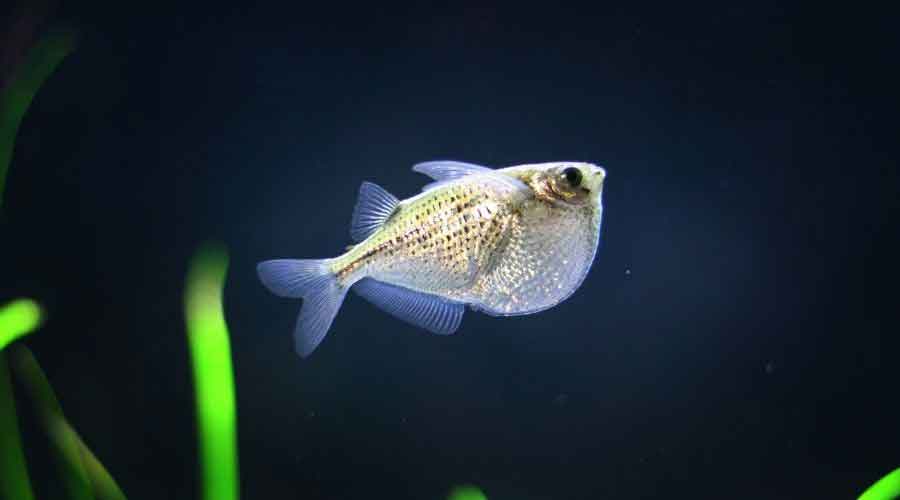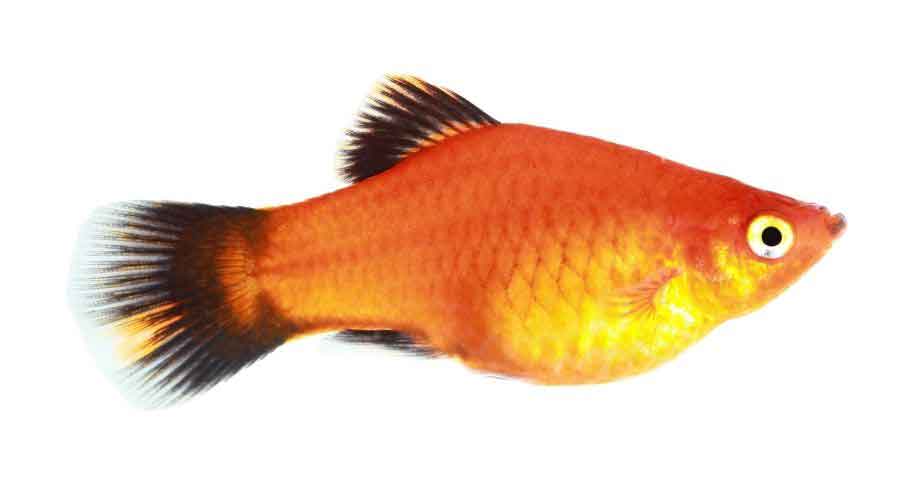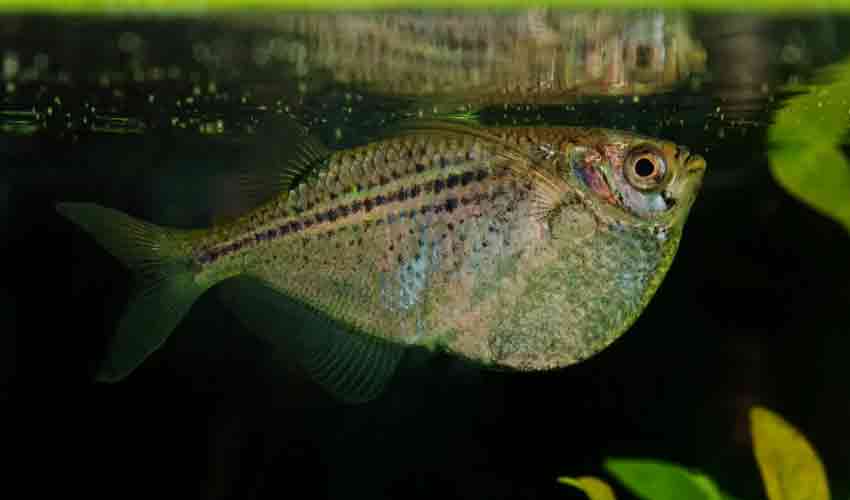In this blog, I’m going to discuss hatchetfish. I’ll discuss their origin, care, and hopefully, help you determine if they might be a good selection for your fish tank.
Let’s take a look.
Hatchetfish: My First Freshwater Fish

As it turns out, a hatchetfish was one of my very first aquarium fish. The reason why I purchased a hatchetfish right off the bat was mainly because I also purchased a blue crayfish. And, I didn’t want my 10-gallon fish tank to be bare. I wanted other fish, and I wanted my tank to be a little more lively.
I was very new to the world of aquariums at the time and had no idea about which fish were safe to keep with my crayfish. After chatting with the clerk at the store, he recommended a few fish. He suggested neon tetras, danios, and the hatchetfish.
He said the hatchetfish was a good choice because they are hardy, easy to take care of and swim near the top of the tank, which is pretty important for fish living in a community fish tank with a crayfish. As many know, crayfish are aggressive and will literally eat whatever they can get their claws on. So if a fish is swimming on the bottom of the tank, their chances of getting snatched up by a crayfish go up a great deal.
Where are Hatchetfish from?
There are nine different types of hatchetfish. The common hatchetfish (Gasteropelecus sternicla) is found in certain parts of South America—specifically in the Peruvian and middle Amazon, the Guianas, and Venezuela.
Hatchetfish typically, with their protruding underbellies, typically grow to be 2.5 inches long and live roughly five years in captivity. However, they can live longer.
Jumping
One feature about the hatchetfish is their ability to jump. These guys can literally jump out of the water. You can often find this oddly-shaped little guy launching into the air when spooked and in the wild when chasing after their next meal, insects.
Since hatchetfish have this amazing ability to jump into mid-air, you want to make sure that if you keep these freshwater fish in your tank, you also have a secure lid with no exit holes. If not, you might wake up one morning to find your little guy on the floor.
Feeding
When it comes to feeding, these fish are carnivores. It’s best to feed them brine shrimp, bloodworms, and protein-rich pellets. And these fish will also enjoy insects if you can capture them. However, note that hatchetfish are not a fan of any type of vegetable matter. So avoid vegetable-based flakes and vegetables.
These fish are pretty aggressive eaters as many keepers will notice. So depending on the aquatic life in the tank, you may want to feed these guys immediately before feeding any of the other fish in your tank.
Also, because their mouths right at the top of their heads, be sure to have openings at the top of the tank where they can eat and surface. In other words, don’t have areas completely blocked off by plants.
What are Good Tankmates?

When keeping tankmates with any fish, there are several different factors to consider. One is tank size and the other is the types of other fish a fishkeeper plans to keep in the tank.
With that said, I always suggest at least a 20-gallon fish tank. And, in general, hatchetfish are good for community tanks in most situations.
They can also do well in small schools of six to eight. And, of course, they can do well while living in a tank with crayfish since they are surface dwellers. And actually, it’s pretty uncommon to find this fish hanging out near the bottom of the tank.
Some fish you might consider to be put in a tank with your hatchetfish include the following freshwater fish.
Tankmates for hatchetfish:
- Tetras
- Mollies
- Corydoras
- Dwarf cichlids
- Rainbow sharks (only if your tank is 55 gallons or more)
- Mexican dwarf crayfish
Recap: Hatchetfish
This is a very unique fish and from my experience fun to watch and easy to care for. It has a pretty good temperament overall and can make a great addition to community fish tanks. These guys are carnivores and can be a bit on the aggressive side when it comes to chasing down their food.
Hatchetfish are hardy, live near the top of the tank, and can even live in small schools.
Over the years, I’ve kept this fish with my blue crayfish for the very fact that it is a top-level tank swimmer.

